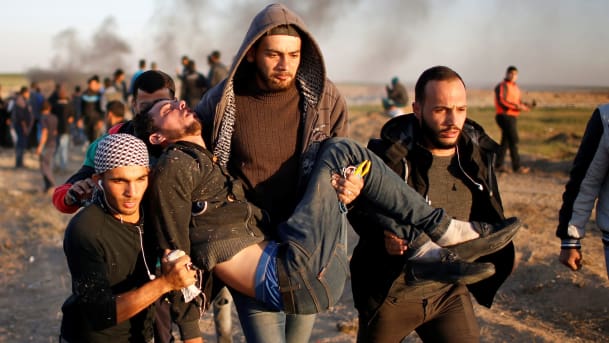 What Trump and John Bolton Don’t Understand About Nuclear War
Jon Schwarz
What Trump and John Bolton Don’t Understand About Nuclear War
Jon Schwarz
October 27 2018, 7:00 a.m.
President Donald Trump’s announcement on October 20 that he intends to pull the United States out of the Intermediate-Range Nuclear Forces Treaty was, if nothing else, appropriately timed. On that date exactly 56 years before, President John F. Kennedy abruptly cut short a midterm campaign trip to Illinois because, the White House said, he had a cold. In fact, Kennedy was returning to Washington to address the Cuban missile crisis — the closest humanity has ever come to obliterating itself with a nuclear war.
The INF treaty was signed in 1987 by President Ronald Reagan and Soviet General Secretary Mikhail Gorbachev. It required both countries to forgo any land-based missiles, nuclear or otherwise, with ranges between 500 and 5,500 kilometers.
In concrete terms, the treaty was a huge success. The U.S. destroyed almost 1,000 of its own missiles, and the Soviets destroyed almost 2,000 of theirs.
But arms control treaties are never about weapons and numbers alone. They can help enemy nations create virtuous circles, both between them and within themselves. Verification requires constant communication and the establishment of trust; it creates constituencies for peace inside governments and in the general public; this reduces on both sides the power of the paranoid, reactionary wing that exists in every country; this creates space for further progress; and so on.
The long negotiation of the INF treaty, and the post-signing environment it helped create, was part of an extraordinary collapse of tensions between the U.S. and the Soviet Union during the 1980s. When Reagan took office, the Soviets genuinely believed that the U.S. might engage in a nuclear first strike against them. This, in turn, led to two separate moments in 1983 in which the two countries came terrifyingly close to accidental nuclear war — closer than at any time since the Cuban missile crisis.
Instead,
the INF treaty was part of an era of good feelings that contributed to one of the most remarkable events of the past 100 years: the largely peaceful implosion of the Soviet Empire. Empires generally do not go quietly, and the dynamics of imperial collapse often contribute to huge conflagrations. Think of the Austro-Hungarian Empire, the Ottoman Empire, and World War I; or the British Empire and World War II. The Soviet fall was an incredible piece of good fortune for the world; if it had happened in the early 1980s, instead of a few years later, it plausibly would have been catastrophic.
It is almost certainly these more diffuse effects that concern the smarter members of the Trump administration, such as national security adviser John Bolton, who’s yearned for decades to decommission the treaty. Russians may be cheating on the treaty in a modest way, while China is not bound by it at all and is developing intermediate-range missiles. But it’s hard to see how this will affect legitimate U.S. security interests.
On the other hand, exiting the treaty will do more than just lead to an arms race in which all three countries throw themselves into building new weapons. It will also
create an atmosphere in which any rational modus vivendi between the U.S. and Russia, or the U.S. and China, will be far more difficult. This is the prize for Bolton and his allies, who can imagine only one world order: One in which they give orders, and everyone else submits.
Bolton has the standard self-perception of his genre of human: In his memoir, “Surrender Is Not an Option,” he explains that he cares about “hard reality,” in contrast to the “dreamy and academic” fools who support arms control.
But in fact, it is Bolton who is living inside of a dream. The hard reality is that our species almost committed suicide on October 27, the most dangerous moment of the Cuban missile crisis, later dubbed Black Saturday by the Kennedy administration. Even with comparative doves in charge of the U.S. and the Soviet Union, we came close to ending human civilization, thanks to mutual incomprehension. And we avoided it, as then-Defense Secretary Robert McNamara later said, not by talent or wisdom, but pure luck. Then, we created a false history of what happened, one which allows terrifying fantasists like
Bolton to reach, and thrive within, the highest levels of power.

President John F. Kennedy meets with U.S. Army officials during the Cuban Missile Crisis in 1962.
Photo: Corbis via Getty Images
There is a standard story about the Cuban Missile Crisis, at least for those who remember it at all:
The perfidious Soviet communists, bent on intimidating the U.S. into submission via the superior power they wielded as a result of the missile gap, sent nuclear weapons to Cuba, from where they could strike the U.S. in minutes. But John F. Kennedy stood tall, refusing to make any concessions to the Russian bullies. JFK went toe to toe with the Soviets, and demonstrated he was tough enough to risk nuclear war. Finally, the other side blinked first and surrendered, taking the missiles out of Cuba. America won!
The hard reality, however, is that everything about this is false, both in its specifics and implications. It is, as James Blight and janet Lang, two of the top academic specialists on the crisis, have put it, “bullshit.” The even harder reality is that October 27 was a far more
petrifying moment than U.S. and Soviet participants understood at the time — and they were terrified. Blight and Lang estimate that if the crisis were run under the same conditions 100 times, it would end in nuclear war 95 times. We are living in one of the five alternate universes in which humanity survived.
The roots of the Cuban missile crisis can be found in three main factors: America’s overwhelming nuclear superiority; the Bay of Pigs invasion of Cuba in 1961; and the stationing of U.S. intermediate nuclear missiles in Italy and Turkey early on during the Kennedy administration.
During the 1960 presidential election, Kennedy attacked the Eisenhower administration for allowing the development of a “missile gap” between the U.S. and the Soviet Union. There was indeed an enormous gap in the number of intercontinental ballistic missiles possessed by each country — but in favor of the U.S. As of 1962, the Soviets only had 20, and they were of such poor quality that they might not have managed to accurately reach the U.S. The U.S. had hundreds. This made the Soviets believe a nuclear first strike by the U.S. — something genuinely supported by factions of the U.S. military and hard right — could leave them unable to retaliate. The Soviets did have missiles, however, that could reach the U.S. mainland from Cuba.
The Soviets were also motivated to send the missiles to Cuba because they believed they would deter another invasion attempt.
Finally, the Soviets reasonably saw it as leveling the playing field. The American nuclear missiles in Turkey could hit Moscow in 10 minutes. Now, the Soviet missiles in Cuba could do the same to Washington, D.C.
The U.S. did not perceive it this way when American reconnaissance discovered the Cuban missiles on October 14. The Joint Chiefs of Staff recommended an immediate invasion of Cuba. Kennedy instead chose to blockade the island. But by October 26, he had come to believe that only an invasion could remove the missiles. The administration began planning for a replacement government in Cuba. All the while the U.S. was acting in the dark, with the CIA concluding that Soviet nuclear warheads had not yet arrived in Cuba to arm the missiles. They had.
Shortly after midnight, in the early morning of Black Saturday, the U.S. informed NATO that it “may find it necessary within a very short time” to attack Cuba. At noon, a U-2 flight over Cuba was shot down, killing the pilot. On all sides,
war — potentially nuclear war — seemed likely, if not inevitable.
But that night, Kennedy made the most important presidential decision in history: He accepted an offer from Soviet leader Nikita Khrushchev to remove the U.S. missiles in Italy and Turkey in return for the removal of the Soviet missiles in Cuba. But the U.S. part of the bargain was kept secret from Americans. The administration maintained that Kennedy had forced the Soviets to give in, giving them nothing.
That was, of course, more than frightening enough. But here’s the rest of the story.
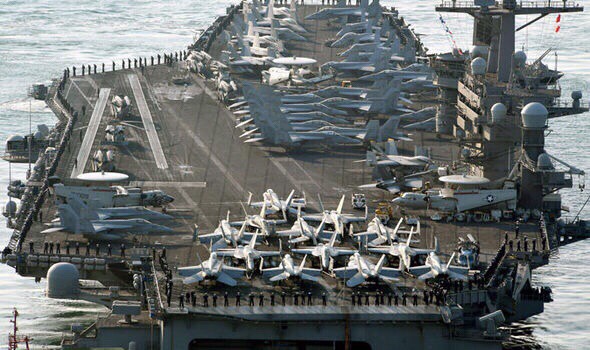 World War 3: US military stokes tensions with Global Thunder 2019 nuclear drills | World | News | Express.co.uk
World War 3: US military stokes tensions with Global Thunder 2019 nuclear drills | World | News | Express.co.uk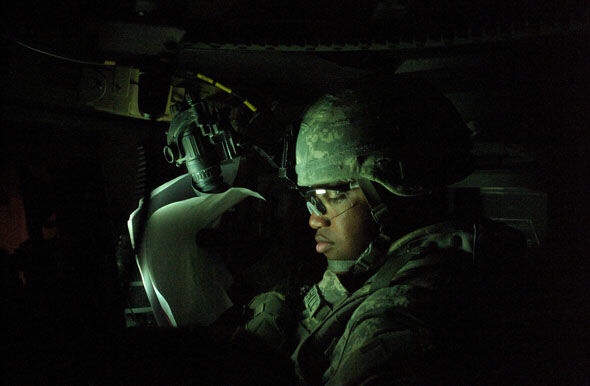
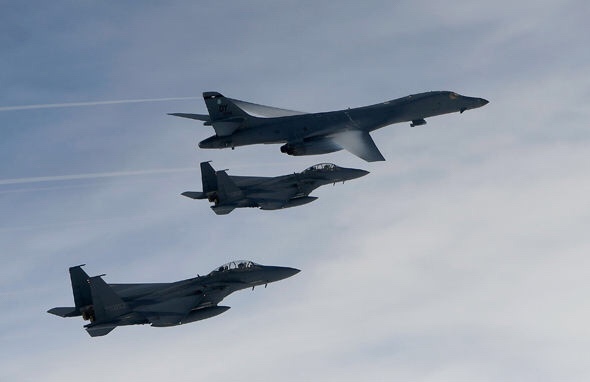




 Nuclear Power and Nuclear Weapons
Nuclear Power and Nuclear Weapons




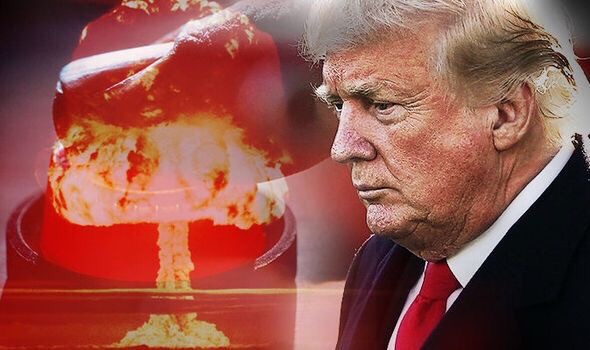




 What Trump and John Bolton Don’t Understand About Nuclear War
What Trump and John Bolton Don’t Understand About Nuclear War

